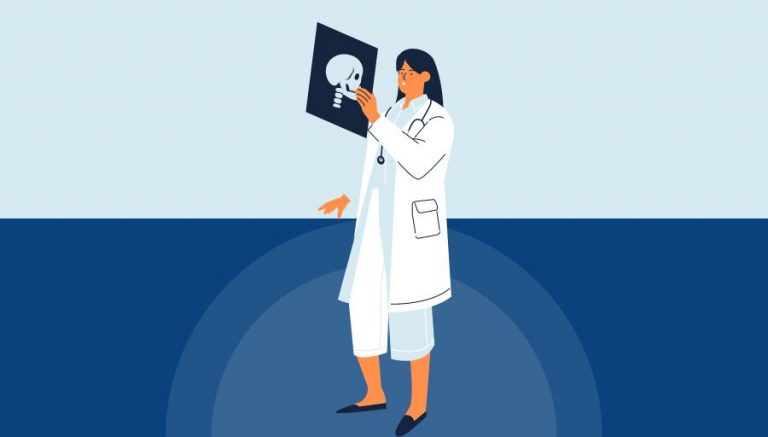How To Use CPT Code 47552
CPT 47552 describes the diagnostic examination of the biliary tract using an endoscope, with the collection of specimen(s) by brushing and/or washing, when performed. This article will cover the description, procedure, qualifying circumstances, appropriate usage, documentation requirements, billing guidelines, historical information and billing examples.
1. What is CPT Code 47552?
CPT 47552 can be used to describe the diagnostic examination of the biliary tract using an endoscope, with the collection of specimen(s) by brushing and/or washing, when performed. This code is used when the physician makes a small incision in the abdominal wall and advances an endoscope through an opening in the abdominal wall or through a T-tube inserted into the common bile duct. The physician may collect specimens by brushing and/or washing during the procedure.
2. Official Description
The official description of CPT code 47552 is: ‘Biliary endoscopy, percutaneous via T-tube or other tract; diagnostic, with collection of specimen(s) by brushing and/or washing, when performed (separate procedure)’. There are no additional notes available for this code.
3. Procedure
- The physician makes a small incision in the abdominal wall.
- She advances an endoscope through an opening in the abdominal wall or through a T-tube inserted through the wall into the common bile duct.
- The physician may collect specimens by brushing and/or washing during the procedure.
- The endoscope is removed.
- The T-tube is withdrawn, and the defect in the bile duct is sutured.
- The tract, peritoneum, and abdominal wall are closed with layered sutures.
4. Qualifying circumstances
CPT 47552 is performed when a diagnostic examination of the biliary tract is necessary, and the physician collects one or more specimens by brushing and/or washing during the procedure. This code is used for percutaneous procedures performed via a T-tube or other tract. It is important to note that this code is for diagnostic purposes only and does not include any therapeutic interventions.
5. When to use CPT code 47552
CPT code 47552 should be used when a physician performs a diagnostic examination of the biliary tract using an endoscope and collects specimen(s) by brushing and/or washing during the procedure. It is important to ensure that the procedure is performed percutaneously via a T-tube or other tract. This code should not be used for therapeutic interventions or procedures performed through other access routes.
6. Documentation requirements
To support a claim for CPT 47552, the physician must document the following information:
- Reason for the diagnostic examination of the biliary tract
- Details of the procedure, including the use of an endoscope and the collection of specimen(s) by brushing and/or washing
- Date of the procedure
- Start and end time of the procedure
- Any complications or additional findings during the procedure
- Signature of the performing physician
7. Billing guidelines
When billing for CPT 47552, ensure that the procedure meets the criteria described in the official description. It is important to report this code separately when performed as a separate procedure. CPT code 47552 should not be reported if other biliary endoscopy procedures have already been performed in the previous seven days. Additionally, consider the location of the testing when coding these procedures, as pulmonary function tests have both a professional and technical component.
8. Historical information
CPT 47552 was added to the Current Procedural Terminology system on January 1, 1990. The code underwent a change on January 1, 2014, where the description was updated to include the option of performing the procedure with or without the collection of specimen(s) by brushing and/or washing.
9. Examples
- A physician performing a diagnostic examination of the biliary tract using an endoscope and collecting specimens by brushing and washing during the procedure.
- A gastroenterologist conducting a percutaneous biliary endoscopy via a T-tube to diagnose a patient’s biliary tract condition and collecting specimens for further analysis.
- An interventional radiologist using an endoscope to perform a diagnostic examination of the biliary tract and collecting specimens by brushing and washing to aid in the diagnosis of a patient’s biliary obstruction.
- A hepatologist performing a percutaneous biliary endoscopy via a T-tube to investigate the cause of a patient’s abnormal liver function tests and collecting specimens for cytological examination.
- A general surgeon utilizing an endoscope to perform a diagnostic examination of the biliary tract and collecting specimens by brushing and washing to assess the presence of any abnormalities or infections.
- An interventional radiologist conducting a percutaneous biliary endoscopy via a T-tube to evaluate a patient’s biliary tract for any signs of inflammation or malignancy and collecting specimens for pathological analysis.
- A gastroenterologist performing a diagnostic examination of the biliary tract using an endoscope and collecting specimens by brushing and washing to aid in the diagnosis of a patient’s biliary stone disease.
- An interventional radiologist utilizing an endoscope to perform a percutaneous biliary endoscopy via a T-tube and collecting specimens by brushing and washing to assess the presence of any strictures or obstructions in the biliary tract.



